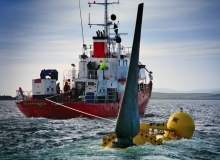
With its 14 full-scale berths, EMEC has supported more grid-connected marine energy devices than any other single site on the planet – and in 2012, all of those berths were fully leased out for the first time since the centre began, back in 2003. According to Lisa MacKenzie, EMEC’s marketing officer that represented a major milestone for the company, demonstrating the high demand for its facilities from developers across the world.
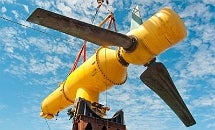
“The development of EMEC has undoubtedly kick started the development of the industry in the UK, enabling wave and tidal energy machines to test in real-sea conditions – vital to proving the technology.

Discover B2B Marketing That Performs
Combine business intelligence and editorial excellence to reach engaged professionals across 36 leading media platforms.
To date, more devices have been deployed in the UK than in any other country in the world. And the majority of these deployments have taken place at EMEC,” she says.
Among them there have been a number of significant UK and global ‘firsts’. In 2004, Pelamis Wave Power became the first floating wave energy converter to generate electricity to the grid anywhere in the world; in 2008, Open Hydro was the first tidal turbine to export to the grid in the UK; in 2009 Aquamarine Power launched the world’s largest working hydro-electric wave energy device – the near-shore ‘Oyster’. A wide range of international co-operation agreements have also been signed.
An ideal base for wave energy testing
According to MacKenzie, two factors in particular have contributed to the centre’s success; the “great vision” of government (more than £30m of UK public money has been invested since 2003, EMEC becoming financially self-sufficient in 2011) and the unique geography of the Orkney Islands, ten miles north of mainland Scotland.
She explains that the west coast of Orkney is subject to the full force of the Atlantic Ocean, with the highest wave recorded at EMEC’s wave test site exceeding 19m, and peak spring tides at the tidal test site reaching 4m/s as water passing from the Atlantic to the North Sea funnels through the islands.

US Tariffs are shifting - will you react or anticipate?
Don’t let policy changes catch you off guard. Stay proactive with real-time data and expert analysis.
By GlobalDataThis, she says, coupled with access to nearby sheltered waters and harbour facilities, which are vital for maintaining devices, makes Orkney “an ideal base with almighty natural resources.”
The steady stream of developers using the centre’s facilities to prove the commercial potential of their technologies seem to agree.
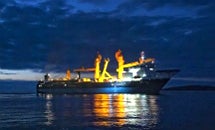
Andritz Hydro Hammerfest’s HS1000 turbine has been running at EMEC for one year and, according to MD Stein Atle Andersen, it has already provided valuable data.
“As one of the front-runners of the tidal industry, we needed early access to a grid connected test site which could offer realistic water conditions – current velocity, wave heights, turbulence, wind speeds and so on – for testing of a commercial size turbine and associated marine works.”
It is a sentiment echoed by Stephanie Roux from the now wholly-owned Alstrom subsidiary, Tidal Generation. “EMEC has been a focus for the UK tidal generation industry and has provided a platform to attract both private and government investment into the industry.
Without EMEC it would not have been possible to test our tidal turbine without finding and consenting a suitable site. This would have significantly delayed the Alstom R&D programme and frankly would not have been practical to do so.”
Changing times – wave is where wind was ten years ago
Atlantis CEO, Tim Cornelius, has described tidal power today as being at roughly the same point that wind energy was a decade ago, and while the marine energy industry has undeniably changed considerably during the ten years of EMEC’s existence, it remains in the early stages of its development.
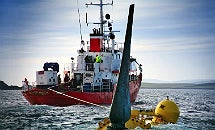
“Wave and tidal energy technologies are still in their infancy,” MacKenzie says, with further testing critical to help the industry develop beyond its current, pre-commercial phase. Nevertheless, the rate of growth in activity and installed capacity in the last few years is, she suggests, a promising sign.
“The increasing number of devices testing at full-scale and proving their reliability over sustained periods in real-sea conditions is helping to drive new investment in the industry, as well as increased interest from utility companies and the supply chain which is gearing up to help service the growing market.”
There is a political dimension to this too. Scotland has set itself an ambitious target for renewable energy – the equivalent of 100% of electric demand and 11% of heat through renewables by 2020 – and for a nationalist government moving towards 2014’s referendum on independence, the economy is a vital concern.
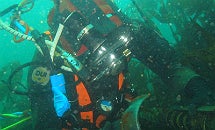
Some have even suggested that, with a quarter of Europe’s tidal and offshore wind potential, and a tenth of its wave power, Scotland might position itself as the ‘Saudi of the North’.
Scottish energy minister, Fergus Ewing, says: “Orkney is recognised internationally as the home of marine energy expertise.
The European Marine Energy Centre is the number one centre in the world for testing marine devices and it is vital that we maintain that lead and continue to reap the economic benefits.
Since EMEC was established in 2003, the marine industry has created around 250 jobs on Orkney.”
The next ten years for wave power
At the beginning of March, the minister announced the Scottish Government’s new £4.1m investment – £3m of it to expand the wave test site, and £1.1m going to an EMEC-led project to develop the potential of support vessels used in the marine industry around Orkney and the Pentland Firth. It is a timely boost and will help to ensure the centre can continue to provide for the ever-changing needs of the industry as it develops, and as prototypes and single device demonstrators begin to be replaced by multidevice arrays.
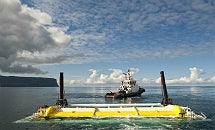
As MacKenzie explains, wave and tidal energy developers from across the globe are bringing their technologies to EMEC to test, and with more activity taking place there than anywhere else in the world, it is creating a mass of expertise both at the centre, and within the local area.
Looking to the future, she says the development of the global marine renewable industry, offers significant export opportunities to the UK.
“We are already witnessing multimillion pound investments in the industry, and as the supply chain develops the UK should be in a strong position to service markets overseas through the export of both physical components and specialist skills and expertise.”
There are, clearly, more steps to be taken along the way for this fledgling sector before that potential is likely to be realised, but if the first ten years are anything to go by, it seems likely that EMEC will be playing a large part in making that happen.
Related content
MERiFIC: sustainable wave power for island communities
The MERiFIC project aims to encourage the development of clean marine power to boost the self-sufficiency of coastal and island communities in the UK and France.
Video feature: Ripples to waves – Plymouth’s marine energy testing lab
A whole host of projects are working to speed up the process of turning small marine devices into commercial tidal arrays.


.gif)



